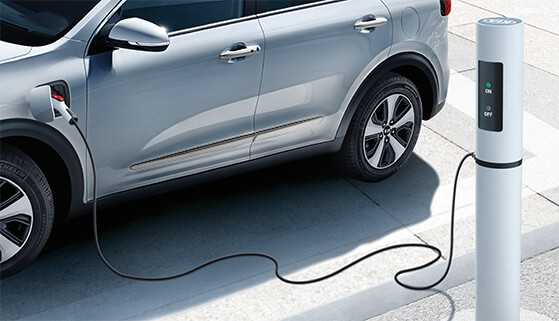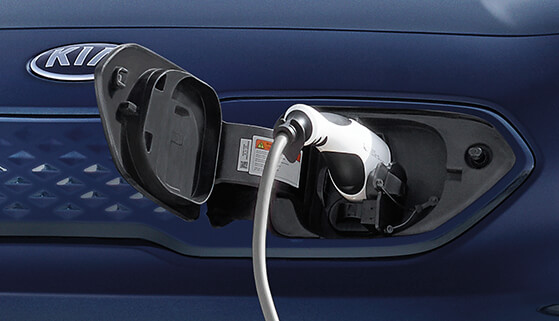Not all EVs are created equal and Kia offers three different types to meet the diverse needs of Canadian drivers. While all benefit the environment, the key difference involves the powertrain – the main components that generate power and transfer it to the wheels. This changes how the vehicle’s internal battery is charged.

Hybrid Electric Vehicle (HEV)
HEV stands for hybrid electric vehicle. As the name indicates, this is a combination of an electric vehicle and a traditional, gasoline-powered vehicle. The components of an HEV include an electric motor, internal combustion engine (ICE, also known as a gasoline engine) and a battery. The HEV derives energy in two ways:
1) through regenerative braking, where the electric motor acts as a generator to save and store the energy produced when a vehicle is slowed down; and
2) fossil fuels that run the secondary gasoline engine.
Benefits: HEVs have a better return on fuel during city driving and while in stop-and-go traffic, in comparison to a standard gasoline or diesel vehicle.
Charging/Fueling: HEVs cannot be plugged into an electricity source and are fueled at standard gas stations.

Plug-in Hybrid Electric Vehicle (PHEV)
PHEV stands for plug-in hybrid electric vehicle. These are Hybrid Vehicles (they contain both an electric and gasoline powered engines), with the ability to charge the battery by plugging them in.
Benefits: In a Kia PHEV, you have the option of full EV mode, for zero emission driving, or HEV, where the gasoline engine is the main source of power for longer range needs, supplemented by the battery and electric motor.
Charging/Fueling: The electric motor in a PHEV can obtain power from regenerative braking (see HEV), regular electrical outlets, or from an electric vehicle charging station. The ICE requires gasoline.

Battery Electric Vehicle (EV)
BEV stands for battery electric vehicle, also known simply as an electric vehicle (EV). EVs run on 100% battery power.
Benefits: An EV does not have an internal combustion (gasoline) engine, meaning it doesn’t produce tailpipe emissions. No ICE means lower maintenance costs in comparison to traditional vehicles.
Charging/Fueling: This type of vehicle derives all its power from plugging into a power source. With charging stations located across the country, your EV can be “fast charged,” keeping your travel capabilities limitless.